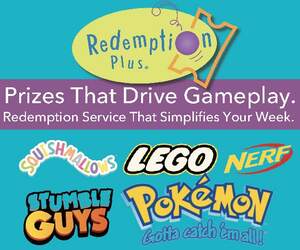Maximize your square footage to boost revenue.
This is just a typical day for the team at Wamesit Lanes in Tewksbury, Massachusetts. “We wanted to be different,” said general manager Donny MacLaren. “We want that reputation of, ‘What is Wamesit going to do next? What crazy idea are they going to come up with?’” The center is one of many businesses finding smart ways to utilize their square footage in ways that go far beyond bowling. Forward-thinking operators across the country are keeping an eye on trends, listening to what people in their communities want to see, and being unafraid to try something new if it can bring in new revenue.
“With the room we have to work with, we’re always trying to bring in different events,” said marketing director Janelle Wagstaff. “Between the tavern, the arcade, the golf, and the big patio, we’re constantly trying to keep something going in every section.”
Flexibility. It’s the new catchphrase for centers looking to implement new income streams. That’s true whether you’re a new 45,000-square-foot facility or a decades-young alley looking for a little bit of reinvention. At Atomic Bowl in Richland, Washington, for example, the team takes cues from its past while keeping an eye on what’s next to inform their business decisions. Built in 1956 and named after the area’s claim-to-fame as one of the homes of the atomic bomb, expansions and reimaginations over the years left it in a perfect position to host house-bank card games when they became legal in the state. From there, it was natural for managing partner Max Faulkner and company to transition the area into a casino space and, eventually, a comedy and nightclub hotspot. “We had this space that holds 750 people,” Faulkner says, “so, we adapted and used it for gaming and club nights and experimented until we found what worked. I think most businesses would give their eyeteeth for our Thursday alcohol numbers.”
Across America, establishments are finding that variety is the spice of success. From local customs to emerging national crazes, they’re offering a wide variety of out-of-the-box entertainment options, giving returning customers the ability to enjoy a memorable day out each time. Some hot examples:
- At either of the three Film Alley locations in Texas, folks can bowl 30 frames and then catch the latest blockbuster surrounded by the cutting-edge tech of one of their uniquely immersive movie theaters.
- Up in Columbia Falls, Montana, the people at Glacier Lanes regularly hold art markets, with local creators selling jewelry, clothing, and pieces for the home alongside live music and food trucks.
- Pinheads in Fishers, Indiana, grew their space to target multiple demographics, with craft beers and chef-inspired fare for adults at their adjoining Alley’s Alehouse as well as high-end arcade machines and interactive 4D rides for kids (and kids at heart).
- Oh, looking for some fresh produce? Swing on by the farmers market at Dodge Lanes every Saturday and grab some pears to go with your spares at the beloved Belvidere, Illinois staple.
Sometimes, in the pursuit of more revenue and greater word-of-mouth marketing, giving the people what they want is the best first step. “Some of it, yes, is looking at how much we could make, looking into average return on investment, and so on,” said Shenaniganz marketing manager Sheridan Najera. “But also, we just ask ourselves, ‘Is this fun?’” A former cabling manufacturing warehouse in Rockwall, Texas, Shenaniganz’s 75,000 square feet gives Najera and the owners plenty of space for fun, and they take advantage of that to offer outsized entertainment designed to turn customers into repeat customers. “They’re coming in and bowling on Friday, but then the next week it’s axe throwing on Wednesdays, and then in a couple weeks they might try an escape room,” Najeer said. “They like that we add things and keep things fresh. You can’t actually be something for everybody, but we still try to be something for everybody.”
David Breen, CEO of PiNZ, which has locations in Massachusetts, New Hampshire, and New York, echoes the need to stay nimble to stay relevant in today’s landscape. “We’re always looking to gain additional customers during the week,” Breen said. “We try to do something each night of the week. Being a no-league venue, we have the flexibility to try new, creative ideas. It allows us to not be a one-trick pony and to have multiple revenue streams going at one time.”
This flexibility is especially important, as he and countless other operators have noted, coming out of the restrictions and business-disrupting realities of a global pandemic. “We looked into bringing live music back, but each band member had to be 10 feet away from one another and then the band had to be 25 feet away from the audience,” Breen said. “Who wants to go to that show?” Instead, Breen worked with his group to digitize their trivia nights via the SpeedQuizzing app and in no time, questions about the highest-grossing Tom Hanks movie (which is Toy Story 4, if you’re wondering) were able to be debated once again. “We made it safe, we made it interactive, and it was the first social activity we were able to bring back to PiNZ.”
The importance of collaboration is a theme that comes up again and again when speaking to operators. Pulling together creative thinkers from inside and outside of the organization to work together to look at a space and wonder about its possibilities.“We have a great team here,” said Wagstaff of Wamesit Lanes. “We bounce crazy ideas off each other just to see if we can come up with something cool. We’ve had ups, we’ve had downs, but so far, so good.” Breen adds to this idea, “We’ve all got enough going on with the hands-on, day-to-day of running the company, you can’t also try to be the full-time marketing genius. You can’t do it all yourself.” Najera from Shenanigenz says, “We’ve got a really strong team,but we also work with an ad agency. We’re willing to adjust the budget almost biweekly, be proactive instead of reactive, if someone can bring in a great idea.”
Partnering with the right companies and professionals is sometimes the key to making new attractions run smoothly. Atomic Bowl works with promoters and booking agents to find talent (the promoters get the lion’s share of the door while Atomic enjoys the boost to their bar sales), but Faulkner also reaches out himself. He even interviews incoming comedians on Zoom and posts them to YouTube so customers can get a preview of the acts. Wamesit developed a relationship with well-known local comedian Dave Russo and has been able to lean on his connections to fill up their popular comedy nights. Shenaniganz does the same with DFW stand-ups, who often are just happy for the stage time and the chance to grow and support their own community.
Part of establishing these customer favorites comes from getting and respecting customer feedback. It’s a great way to test the waters on what ideas could work, and a fantastic way to gather data and contacts to build your database. “I’m really passionate about customer feedback,” said Najera. “We always look for ways to reach out. Online ticket sales and opt-in marketing are big. Kids Bowl Free has been great for us. We send out surveys after visits, ask what we could improve, what we did well. Positive feedback is just as important as criticism. We want to stay in the conversation to make sure our guests are having a great time.” If response rates could be higher, try incentivizing them. Wamesit gives a $5 game card to customers as they leave if they’ll answer a short questionnaire. PiNZ offers free high- speed Wi-Fi to people who share their email addresses. In addition, be consistent and communicative on social media. Facebook, Instagram, TikTok, LinkedIn; whatever the medium, seek out responses to boost your visibility and stay top-of-mind for people looking to fill their calendars.
But even with that level of customer interaction, you can’t be shy about trying something different or, sometimes more importantly, letting something fail. Faulkner said that when Atomic Bowl instituted trivia with Geeks Who Drink, the crowds were great, but joked, “The geeks mainly drank water.” Still, when it comes to new ideas, he added, “Commit to it. Give it time to see if it sticks. You might have something good on your hands.” If something does stick, it has the potential to create whole new communities of customers who might never have otherwise become regulars.
In addition to bringing in droves of wannabe Houdinis with their Escapology-managed escape rooms, Shenaniganz partnered with the World Axe Throwing League to refine the design of their lumberjack lounges, and the response has been axe-ceptional. “Every season we’ve gotten more and more people, and it’s really created this whole tribe,” Najera said. “They were mostly strangers before this, and now they’re friends who hang out outside of the league. That’s been so awesome to see.”
If you told a bowling alley owner of yesteryear that the facilities of the future would be filled with people chucking around axes, paintless paintball (it’s a thing; look it up), and golf leagues that exist within less than 100 square feet, they probably would’ve closed out your bar tab. But this is the new reality: smarter usage of space and the ability to adapt to make more entertaining experiences and happier customers. The managers making the best use of these strategies today will continue to keep an eye looking toward tomorrow, to find the next big thing that drives people through their doors. “Stop looking at everything as what it’s sold as and think about using it differently,” MacLaren of Wamesit Lanes reminds us. “See what people are doing anywhere else, and just get creative and don’t be afraid to do it. We think, ‘We have bowling lanes. How do we turn them into occupiable square footage?’ We’re going to figure that out.”
“Look for inspiration everywhere,” Breen said. “Go to shows that are outside of your wheelhouse. Sometimes you just need to see what else is going on. It gives you a new perspective on what your business can and cannot do.” Doing more with less (or, if you have more, getting the most out of that more) will always be fundamental to success in this industry. Only time will tell what that looks like for the smart centers of the future.




